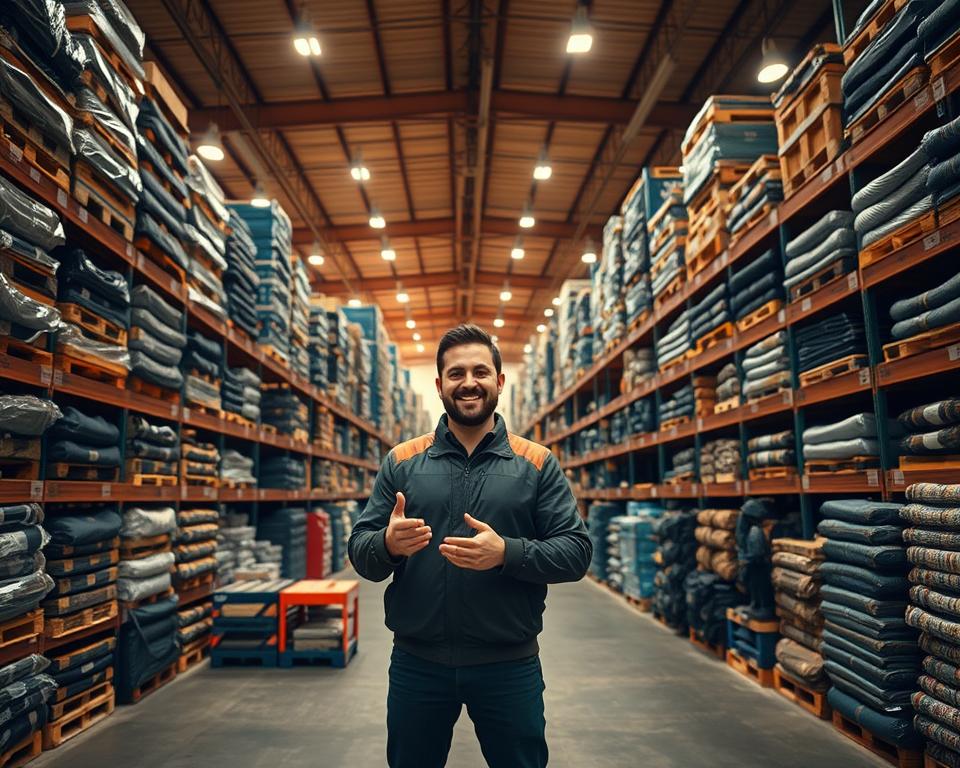Repurposing Industrial Furniture Hong Kong Developments
Did you know that repurposing factory furnishings in HK is on the rise? More people are selecting second-hand items. This transition shows a increasing interest in environmental consciousness and distinctive home decor. Residents are attracted to the charm and character of transformed pieces.
Platforms like Expat Asia and Facebook Marketplace are evolving into preferred spots for locating distinctive furniture in Hong Kong. The appeal of industrial design in HK is apparent. Places like HK Upcycle, which aids Hong Kong Dog Rescue, lead the way. They promote repurposing and waste reduction.
The requirement for eco-friendly living solutions is growing. The attraction of Stockroom Hong Kong has not at all been more intense. It combines cutting-edge design with environmental awareness. This not only improves home visual appeal but also benefits the ecosystem.
Overview to Factory Furnishings in HK
Industrial furniture in Hong Kong has a long-standing tradition, stemming from the city’s industrial background. It’s made from unprocessed materials like steel, wood, and cement. These designs bring a retro vibe while still being practical today. The vintage factory style perfectly blends looks with practicality, making it a favorite for current homes.
The transformation of areas like Kowloon East into artistic communities has substantially influenced the furniture scene. Independent bands and creative sectors relocated to, seeking affordable areas and room for creativity. This shift increased the appeal of industrial furniture, making it a staple in living spaces. In the early 2000s, prices were low, with $1,000 buying you five hundred to six hundred square feet.
The change from manufacturing to creative industries has altered industrial designs. Today, sustainable furniture in HK often features these vintage-inspired pieces. This attracts those who care about the environment. By merging old-world charm with sustainable methods, HK’s furniture scene has grown, echoing the city’s vibrant cultural landscape.
Development of Transforming Developments
In HK, the shift of transforming furnishings has grown significantly, indicating a stronger dedication to environmental sustainability. Architecture companies like MVRDV Asia head preserving structures instead of razing them. They update the interiors of heritage structures, utilizing the adaptive reuse method. This method renews industrial structures that have ceased their initial function.
Factory heritage structures are famous for their distinctive characteristics, such as large spaces and multiple purposes. Their repurposing possibilities offers a imaginative resolution to modern needs while linking us with the heritage. To maintain a balance between preservation and practicality, a decision-making model is essential for efficient repurposing projects.
The increase of platforms for used goods and local DIY upcycling culture marks a notable change in community values. People now cherish second-hand items and undertake transformed furniture projects in HK. Neighborhood businesses cater to this requirement, aiding a eco-friendly economy that lowers waste.
| Element | Advantages of Adaptive Reuse | Impact on Community |
|---|---|---|
| Conservation | Retains historical significance | Encourages local pride and heritage appreciation |
| Eco-friendliness | Lowers waste and resource usage | Promotes eco-conscious habits among residents |
| Creativity | Promotes creative design ideas | Backs local artisans and small ventures |
| Economic Development | Boosts property values | Generates employment opportunities in the reuse sector |
Over the last half a decade, there’s been a rise in initiatives transforming old industrial areas into artistic and manufacturing zones. This shift marks a societal change towards sustainability and honoring the history of these buildings. The outlook of furniture design in Hong Kong seems to be moving towards upcycled furniture initiatives. These focus on innovation and accountability.
Benefits of Selecting Factory Furnishings
Choosing industrial furnishings in HK offers many perks, merging style with practicality. It’s known for its long-lasting nature, made from components like steel, reclaimed wood, and cement. This makes it a long-lasting choice for homeowners, establishing itself as a prudent investment.
The versatility of industrial furnishings to various home styles is a significant plus. It fits perfectly in contemporary lofts or traditional kitchens. The addition of oak wood furniture in HK introduces coziness and dimension, balancing the unfinished look of steel and concrete.
Another key perk is the cost-effectiveness of factory furnishings. With brand-new pieces often being pricey, reused alternatives offer fashionable yet cost-effective options. Homeowners searching for affordable home styling will find industrial furnishings a fantastic choice, attaining a stylish aesthetic without exceeding the budget.
The unique combination of vintage and contemporary design in industrial furnishings creates a inviting environment. It promotes community living, promoting social gatherings and engagements. This style blends functionality with character, making it more and more favored for those who cherish both appearance and economical nature.
| Advantage | Description |
|---|---|
| Longevity | Made from durable materials, providing extended use. |
| Aesthetic Versatility | Compatible with diverse interior styles, from contemporary to traditional. |
| Affordability | Affordable options available, making stylish choices accessible. |
| Community Orientation | Promotes community interactions and social events through design. |
| One-of-a-kind Appearance | Combines vintage charm with contemporary design, enhancing visual appeal. |
Reusing Industrial Furniture Hong Kong
In HK, the tendency of repurposing industrial furnishings has witnessed a notable increase. It showcases a distinctive mix of innovation and functionality. Local craftsmen and boutiques, like HK Upcycle, focus in creating one-of-a-kind pieces. These items bring both charm and functionality to different spaces.
This strategy attracts those seeking distinctive furniture HK. It also promotes a greater understanding for sustainable methods within the local area.
Unique Styles and Aesthetic Attraction
Repurposed factory furniture is famous for its eclectic designs. These patterns combine usability with artistic expression. Local designers convert ordinary items into focal items that can elevate any room’s aesthetic.
For example, a classic rosewood storage unit by Poul Cadovius can boost a loft space. An classic map of Asia offers a personal touch at the entrance. The adaptation of these materials results in unique furniture Hong Kong that suits diverse tastes. It is especially favored among those who appreciate the industrial style.
Budget-friendly Options for Home Decor
Choosing reused options provides affordable options for home styling. Shoppers can find top-notch pieces at more affordable costs than new items. Investing in reused furnishings not only helps save money but also supports local artisans.
This contributes to the economic landscape. With factory style furniture HK turning into increasingly preferred, buyers are keen to discover budget-friendly yet stylish alternatives. These choices match their interior design needs seamlessly.
Sustainable Approaches in Hong Kong’s Furniture Sector
Sustainable approaches are essential in HK’s furnishings market, vital for achieving zero carbon emissions by 2050. Increasing understanding of ecological effects has emphasized eco-friendly furniture in Hong Kong. Repurposing factory furniture to cut down on waste supports the city’s sustainability objectives.
Homes in HK produce about four metric tons of CO2 annually. Given that people spend approximately ninety percent of their time spent inside, l shape Sofa Hong Kong can enhance indoor air quality and well-being. Sustainable methods in Hong Kong foster better living conditions and address waste problems. The international furniture sector, estimated at USD 575 billion, highlights the requirement of sustainable consumption.
Nearby companies, like HK Eaton Hotel, have greatly lowered trash by 60% through charitable giving and reusing. Their initiatives demonstrate the furnishings sector’s capacity to lead in environmentally friendly solutions. Employing materials like bamboo, which matures in under five years, demonstrates the productivity of environmentally friendly design.
| Material Category | Time to Maturity | CO2 Reduction (per 10,000 tons) |
|---|---|---|
| Bamboo | Under five years | Not applicable |
| ECONYL® | N/A | 65,100 tonnes |
| Recycled Glass | N/A | 246 kg per ton |
Cutting-edge styles that merge natural elements with residences embody environmentally friendly approaches in HK. The circular economy approach supports upcycling resources. This underscores sustainable practices in the furnishings sector and the community. Environmentally friendly furnishings is a forward-thinking approach for Hong Kong’s garbage management problems, helping both consumers and the environment.
Favored Trends of Transformed Furniture
In Hong Kong, the need for different furnishings styles keeps to prosper. Two popular tendencies arise as preferred choices: vintage industrial style and current sustainable options. Each style reflects unique elements of design and practicality, attracting a broad spectrum of customers.
Vintage Factory Style
This design captures the essence of Hong Kong’s vibrant industrial heritage. It merges components of rustic charm with modern visuals. Classic furniture in HK echoes with many, featuring a blend of repurposed materials, such as timber and steel.
Durable commercial furnishings exemplifies this trend, commonly defined by long-lastingness and timeless appeal. These pieces not only offer practical uses but also share tales of the past. They contribute to the overall environment of a space.
Current Sustainable Alternatives
As eco-friendliness turns into a key concern, contemporary eco-friendly options provide a new perspective on furniture creation. Produced using eco-friendly materials and using creative methods, these furnishings serve sustainably minded consumers. Reused furniture, especially pieces made from pallets, illustrates the potential of reusing materials to craft beautiful, useful designs.
Such choices strengthen a dedication to cutting down on waste while supplying fashionable options for modern residences. With a focus on aesthetics and sustainability, these contemporary environmentally friendly options serve different interior styles.
Discovering Reused Furniture in Hong Kong
Exploring Hong Kong’s dynamic local market offers numerous avenues to repurposed furnishings. Local stores and online marketplaces are essential in this journey. They provide a variety of one-of-a-kind furnishings options that merge sustainability with imagination.
Regional Boutiques and Online Platforms
Initiating your search at regional boutiques is a good plan. Places like 2nd Chance concentrate in upcycling and restoring furnishings. Online marketplaces like Facebook Marketplace and another online marketplace also offer selections for unique furnishings in HK. These choices are ideal for discovering unique items without breaking the bank.
Repurposing vs. Buying New
Choosing between repurposing and purchasing new furniture is a crucial choice. Repurposing converts used pieces into something new, promoting imagination and eco-friendliness. Many residents engage in this, extending the use of materials and reducing waste. On the other hand, buying new furniture provides simplicity and contemporary patterns.
For those looking into repurposing, focusing on quality materials and workmanship is crucial. Some firms supply after-sales services for second-hand buys. This community-focused strategy renders transforming factory furnishings in HK a rewarding choice for environmentally conscious consumers.
Comprehending the variances between upcycling and purchasing new can boost your quest for one-of-a-kind items. Whether you’re searching for regional stores, digital platforms, or upcycling projects, the process in Hong Kong deepens your understanding for creativity and environmental consciousness.
Impact of Environmentally Friendly Furnishings on Wellness
Choosing sustainable furnishings in HK has a substantial impact on wellness. Environmentally friendly living promotes eco-consciousness and creates better living conditions. Furniture crafted from hardwood, like oak, maple, and cherry, is long-lasting and enhances indoor air quality.
Veneer desks, favored in the environmentally friendly trend, employ a slim layer of quality wood on a solid base. This construction reduces resource use and offers a stable, aesthetically pleasing option. It minimizes problems like bending or cracking, rendering it ideal for different spaces.
Choosing locally crafted furnishings supports artisans and preserves traditional craftsmanship. This approach reduces greenhouse gas emissions from transportation, encouraging environmentally conscious living. It allows customers to appreciate custom designs while lowering environmental impact.
Timeless furniture designs foster purchasing premium craftsmanship. This builds areas that stay relevant for years, minimizing the necessity for constant updates. It supports a sustainability-focused mindset, reducing ecological footprint. Furniture crafted from eco-friendly materials and environmentally friendly manufacturing processes promotes a healthier ecosystem.
Investing in sustainable furniture in HK can improve well-being and blend aesthetics with eco-friendliness. It backs a better lifestyle through carefully chosen designs. Focusing on environmental consciousness in the furnishings sector indicates a commitment to building areas that value the ecosystem and personal health.
Case Studies of Effective Repurposing Projects
In Hong Kong, several projects showcase effective reusing projects that give old furnishings a fresh start. These changes blend imagination with eco-friendliness, showcasing regional enterprises and houses that adopt eco-friendly approaches. By upcycling old furnishings, these efforts encourage one-of-a-kind furnishings styles in Hong Kong. They blend artistic elements with functional features.
A local café is a prime instance, transforming old factory shelving into stylish chairs. This initiative not only cut down waste but also created a friendly environment, drawing in a diverse audience. The café’s proprietor mentioned the triumph of using one-of-a-kind and reused pieces. It enhanced the appearance while benefiting environmental consciousness.
Residential areas also include unique refurbishments, such as pre-owned wooden pallets transformed into chic coffee tables and outdoor lounges and Industrial furniture Hong Kong. This pattern highlights the adaptability of repurposed materials, producing unique furnishings not found in standard stores. Such efforts in Hong Kong encourage others to improve their interior design with originality and eco-friendly approaches.
| Project Type | Details | Advantages |
|---|---|---|
| Café Revamp | Conversion of industrial shelving units into chairs | Enhanced ambiance, lowered garbage |
| Home Reuse | Old wood pallets transformed into furniture | One-of-a-kind pieces, eco-friendly methods |
| Art Gallery Setup | Reused materials used for art installations | Aesthetic appeal, heritage value |
| Community Workshop | Classes on furniture refurbishing | Skill development, social involvement |
These success stories illustrate the impact of collective effort in supporting distinctive furniture styles in HK. They encourage a sustainable mindset. By implementing such creative methods, the urban area can continue to lead in environmentally friendly approaches and fashionable interior solutions.
The Importance of Neighborhood in Promoting Reused Furniture
In Hong Kong, local initiatives are essential in raising awareness about transformed furniture. Community events and seminars stimulate innovation, showing how pre-owned objects can be transformed. These events educate inhabitants on the importance of repurposing and repurposing furniture.
Across areas, creativity flourishes through collaborative projects. Residents come together to learn upcycling, transforming waste into stylish home decor. This group effort boosts skills and strengthens stronger social bonds.
- New events have highlighted social and circular design brands, with 6 showcased to demonstrate cutting-edge ideas.
- Community spaces allocated for leisure and exhibitions amount to 70sqm, giving adequate room for exploration and education.
- Shows reach a sum of six, centering on the transformative potential of reused furnishings HK.
Programs like Project Futurus boost community engagement by merging cultural aspects with sustainability. Over one hundred and seven dim sum sessions have involved more than 2,600 elders, highlighting the necessity for inclusivity in sustainable practices. The volunteer hours, surpassing 2,200, demonstrate devotion to a greener future.
Such initiatives not only boost awareness of environmental issues but also encourage a resourcefulness culture. The repurposing trend illustrates rising awareness of environmental effects, proving that every waste material has potential. As increasing numbers of people engage in these initiatives, the beneficial effect increases, creating a lasting change.
Future Tendencies in Industrial Furniture Design
The prospects of industrial design in HK is set to be revolutionary. With the international market forecasted to attain USD 780.8 billion by 2030, creativity in furniture will lead the charge. Environmental consciousness and functionality will be at the heart, driven by consumer demand for sustainable and adaptable items.
Intelligent furnishings is on the increase, integrating Internet of Things (IoT) tech for better user experience. Look forward to wireless charging pads, integrated speakers, and health monitoring systems in designs. These developments guarantee to reshape the customer experience and create new benchmarks for practicality.
Technological incorporation will extend beyond connected characteristics. AR, virtual reality (VR), and XR will revolutionize retail experiences. Customers will be capable of seeing how furniture looks in their home digitally, merging virtual and physical shopping.
Automation are set to revolutionize manufacturing processes, promising increased productivity and precision. Automated systems will optimize operations like cutting and constructing, cutting down on waste and improving quality standards.
Eco-friendly awareness will be a major trend. Sustainable production methods will include resources like bamboo material, and repurposed wood. This transition meets customer needs for environmentally conscious choices.
Adaptable furniture styles will serve city living, where space is at a premium. Innovative collapsible and compact patterns will provide fashionable solutions for limited spaces.
The blend of classic and modern aesthetics will keep influencing designers. They will aim to integrate practicality with style, integrating cultural elements. This method will create a holistic trend, combining eco-friendliness with style.
The Bottom Line
In HK’s lively design scene, repurposing factory furniture continues to be a preferred trend. With high property prices, converting old industrial areas into contemporary living spaces is getting increasingly common. This change demonstrates a different approach in urban living, blending innovation with functionality.
Projects like the Mass Operations Loft showcase how fashion and relaxation can coexist. These houses mirror personal tastes while encouraging environmentally conscious living. This style not only fulfills aesthetic needs but also supports environmental goals.
By reducing garbage from building and tearing down, HK can set an example in environmentally friendly methods. Local initiatives and innovative projects encourage locals to discover the charm of transformed furnishings. This method benefits a greener lifestyle and helps create a more sustainable future.
FAQ
What is repurposing industrial furniture in Hong Kong?
In Hong Kong, reusing manufacturing furniture means giving old pieces a new life. These pieces, crafted from substances including metal, wood, and concrete, keep their industrial charm. This trend is propelled by an interest in distinctive styles and sustainable living.
Why does industrial furniture in demand in Hong Kong?
Factory furniture is preferred in Hong Kong because of its resilience and varied aesthetics. It also maintains historical value. Given the city’s industrial history, these pieces integrate seamlessly with modern interiors, paying homage to history.
How do repurposing furniture contribute to sustainability?
Transforming furniture minimizes waste by extending the life of old items. It aids Hong Kong’s sustainability goals and fosters eco-friendly living. Utilizing reused materials is encouraged.
Where to locate unique industrial furniture in Hong Kong?
Distinctive industrial furniture can be located at neighborhood stores such as 2nd Chance. Internet platforms such as Asia Expat and Facebook Marketplace also offer a variety of repurposed and vintage pieces. These mirror the city’s industrial heritage.
What benefits come from selecting repurposed industrial furniture?
Transformed industrial furniture is generally less expensive than new items. It provides a unique appearance and flexibility, fitting various interior styles. It’s a smart option for both homeowners and renters.
Will repurposed furniture impact my health and well-being?
Certainly, selecting eco-friendly furniture improves indoor air quality. Sustainable materials and designs create spaces that encourage well-being and mindfulness.
Which styles of repurposed furniture are in vogue in Hong Kong?
Trends consist of retro factory styles that showcase the city’s heritage. Contemporary sustainable items also suit contemporary tastes. This mix of old and new is in demand in living spaces.
Do community initiatives backing repurposed furniture in Hong Kong?
Absolutely! Neighborhood events, seminars, and partnerships encourage creativity and sustainability. They educate residents regarding the benefits of reusing furniture and enhance community engagement.
Can you provide some successful case studies of repurposed furniture projects in Hong Kong?
In Hong Kong, several businesses and residences have transformed old furniture into creative designs. These projects embody style and sustainability. They demonstrate how repurposing can upgrade spaces while keeping the city’s industrial character.
What future trends can we expect in industrial furniture design?
Upcoming trends in manufacturing furniture design will probably feature intelligent technology integration and versatile items. Eco-friendliness will stay a central theme, meeting consumer demand for original and environmentally friendly options.



